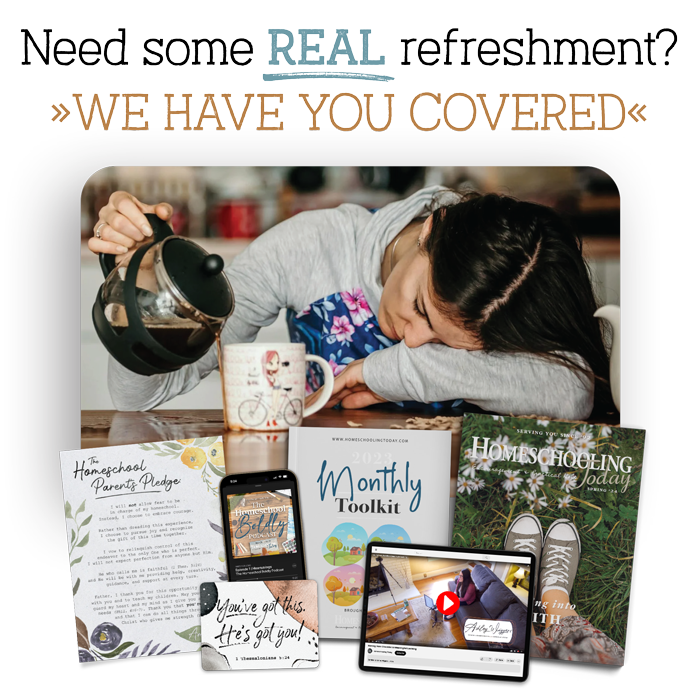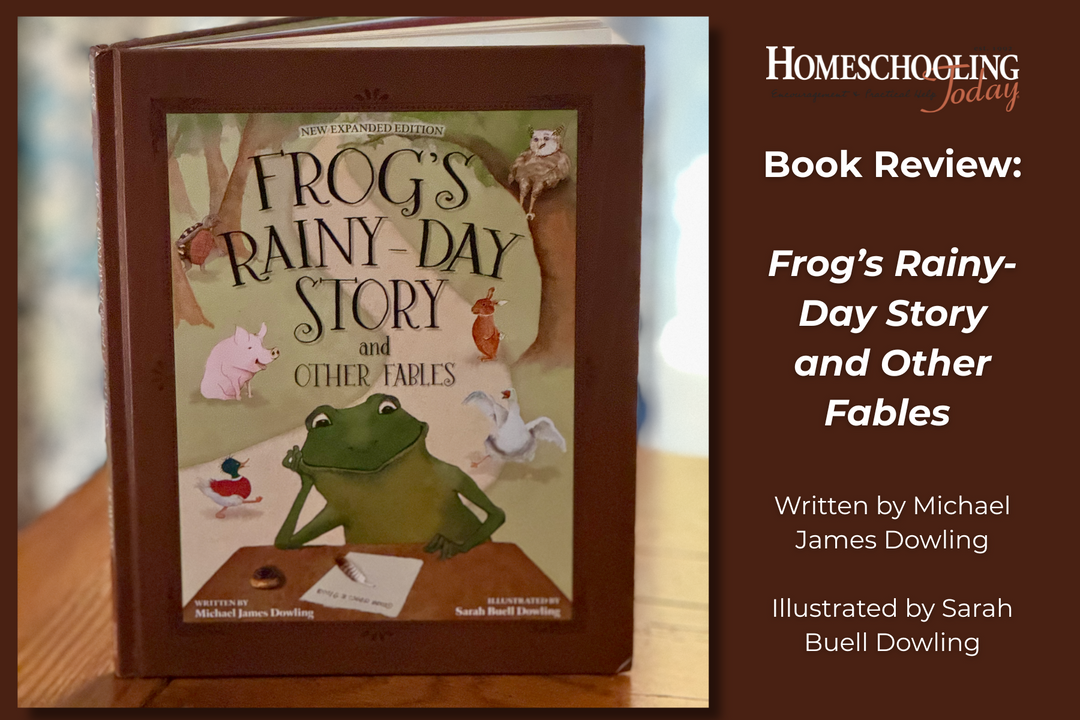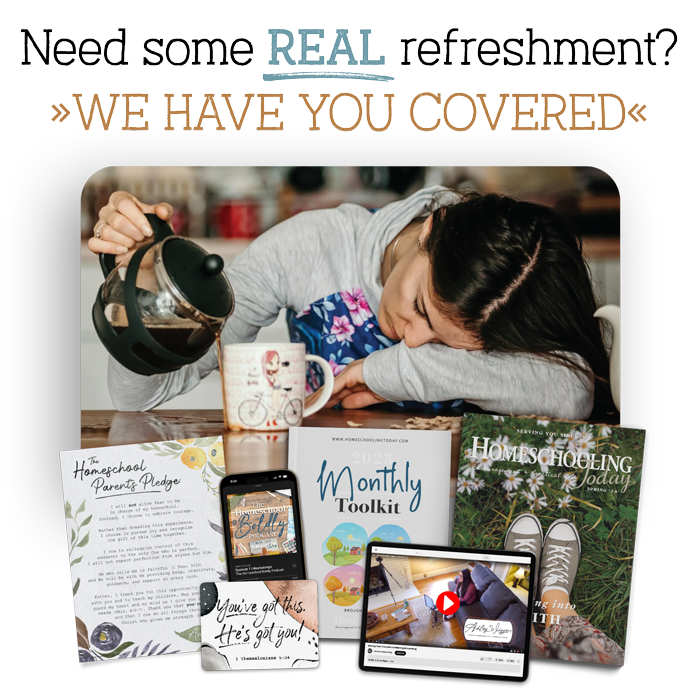Learning Styles: The Most Useful Tool in Your Teacher’s Toolbox

Discover how knowing your children's learning styles can help you build a solid foundation for their education.
My oldest son took Biology through a co-op class during his freshman year of high school. For the tests they were required to know at least twenty definitions per unit, so I told him to study the words and I would quiz him. Unfortunately, when I quizzed him he didn’t remember very many. It was as if he hadn’t even seen the words before.
So we tried something else. I said the definition to him and he repeated it back to me—back and forth we went until he had them down. Why couldn’t he just read the definitions over and over instead of saying them over and over to learn them? My friend’s son was in the same class and could study the book, memorize the words quickly, and be ready for the test without saying them aloud. Why the difference?
Perhaps one of the biggest factors, besides interest in the subject, was a matter of learning styles. You see, my son is primarily an auditory learner. From the time he was a toddler he loved listening to audio books and wanted me to read aloud to him. Even as a college student, he didn't take notes in class because it distracted him from listening to the lecture.
Learning Styles: A Helpful Tool

There are many excellent books and resources on this topic. If you look up learning styles on the Internet, you’ll find multiple labels and theories about them. But we want to give you a simple overview so you can consider what your own children’s learning styles might be (and don't worry, it may take some time to figure it out!). With that knowledge, you'll have a tool to help you unlock their learning potential.
What Are Learning Styles?
Learning styles are the ways, techniques, or manners in which we gain knowledge. One of the most common ways to categorize these styles is visual, auditory, and kinesthetic learners.
Webster’s 1828 dictionary defines learning as
Gaining knowledge by instruction or reading, by study, by experience or observation; acquiring skill by practice.
Each of these styles—visual, auditory, and kinesthetic—can be clearly seen in Webster definition: Gaining knowledge by instruction (auditory) or reading (visual), by study, by experience (kinesthetic) or observation (visual); acquiring skill by practice (kinesthetic.)
Visual Learners
Visual learners learn best by seeing. They tend to remember things they read and write. You may even notice them close their eyes to "picture something" in their heads. Some visual learners may prefer reading books themselves instead of listening to you read aloud (though we still recommend you do both). Visual learners love to see information organized in charts, illustrated in diagrams, or presented in other visual aids.
Auditory Learners
Auditory learners learn best by hearing. These students often enjoy listening to stories and music. They remember things that are said aloud and often ask questions to further their understanding. Participating in class discussions is one of their favorite ways to learn.
Kinesthetic Learners
Kinesthetic learnings learn best by moving or doing. They remember things that they do—like experiments and hands-on activities. Many enjoy playing sports or dancing. Learning sticks when it involves movement for these active learners.
Why Do Learning Styles Matter?

The most important thing to remember, though, isn’t a list of labels. Instead, realize each of your students is a unique individual. Because of this, they will have different interests, different ways in which they learn best, and specific preferences for how they learn—and one way isn’t any better than another.
Does that sound overwhelming when you think about your family? Do you think, “How in the world can I teach them without running myself ragged?” Don’t worry! It's easier than you might think.
Don't Ignore Other Learning Styles
If a child prefers to learn by listening, that doesn’t mean he won’t learn anything by reading. If your learner loves hands-on activities, it doesn’t mean she can’t get anything out of an educational video. Actually, the more styles addressed with each learning experience will help all children to learn more effectively. People usually have more than one learning style, and certain ones may be more apparent during specific stages of life. For example, young children will benefit from using concrete objects to learn math.
Discover learning strategies for each of the learning styles with our FREE Printable!
Though normally you’ll notice each of your children have a dominant learning style, they will still learn using the other styles. My son who learns so well with auditory methods is also a very good reader. Often, the most effective way to teach is to use a variety of styles in the same lesson. The more senses your students use, the better they will learn.
Just think of identifying students’ dominant learning styles as having insight into how they learn best. Consider it another tool in your educational tool box. You can use all the tools in the box, but sometimes you need that special one to help fix a specific problem—like when your student has to memorize a lot of biology words!
Choosing Resources and Curriculum Based on Learning Styles
So how does identifying your children’s learning styles help you to choose which curriculum and resources to use? For one, if you have a student who is predominately a kinesthetic learner, you probably need to stay away from curriculums that don’t include any hands-on activities—or at least be willing to find some to add. If you have an auditory learner, a workbook-based curriculum might not be the best. And if you have a visual learner, avoid learning a subject with primarily audio books.
The most effective curriculums use a variety of materials and methods and are adaptable to students with different learning styles.
Study Your Children
Here are a few online resources that might help you to determine your children's learning styles:
But the most effective way to figure out your children's learning styles is to become a student of your students. Try different strategies. Observe how they learn most effectively. Then utilize that knowledge in how you teach them, and in what resources and curriculum you choose.












